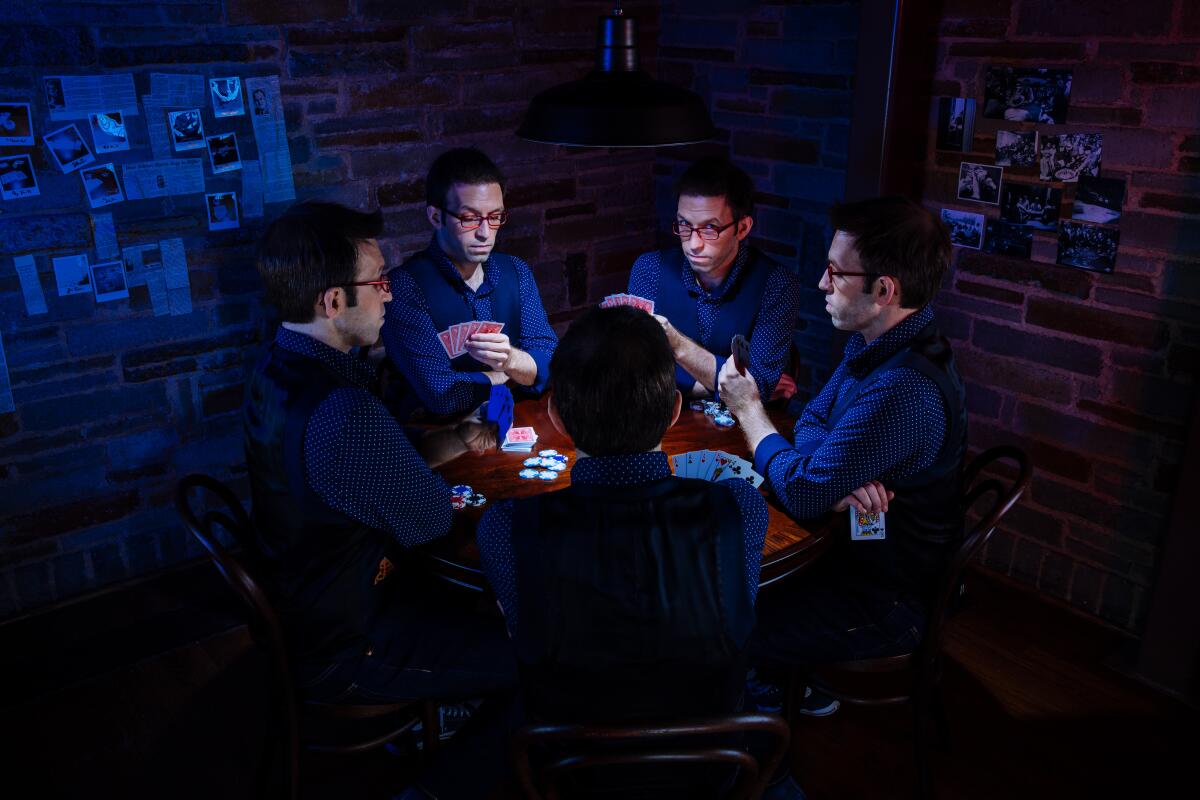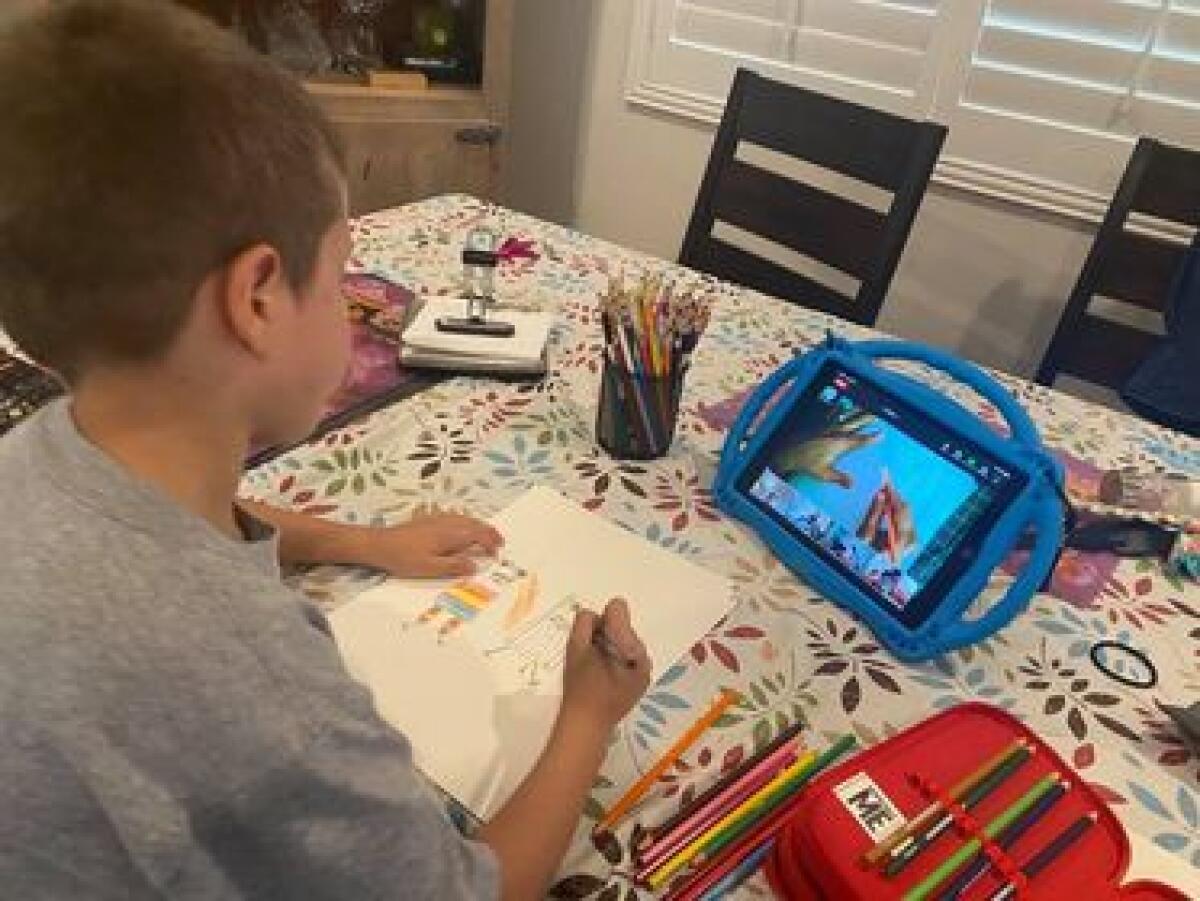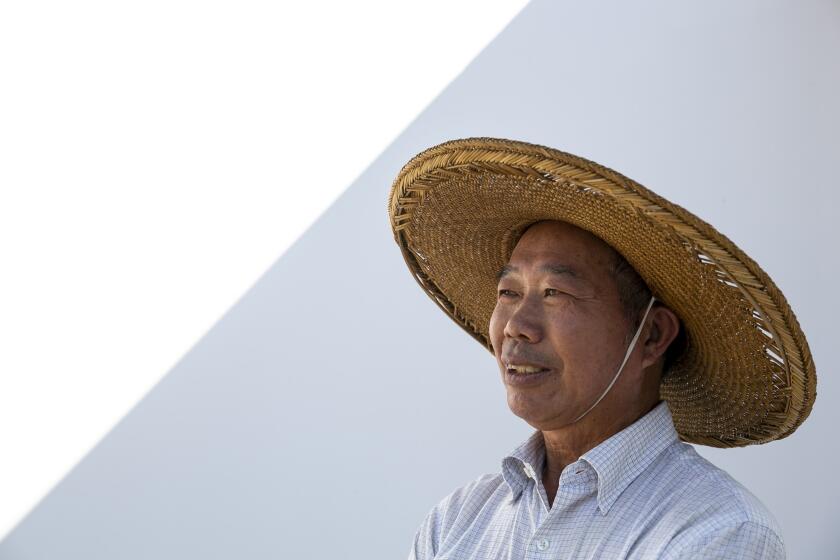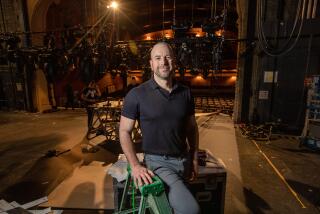We asked readers what they think of virtual arts. Here are their honest responses

For Pamela Geisel, the performing arts — even in their virtual state — have been a lifeline during the pandemic.
Geisel, 65, has spent much of the year driving between Burbank and Prescott, Ariz., which is home for her parents, who have dementia. In between caregiving responsibilities, she has caught at least 10 shows, including Los Angeles Philharmonic highlights at the Hollywood Bowl, Stephen Sondheim’s 90th birthday bash and virtual conversations hosted by arts organizations.
“I had almost zero free time but still managed to stream a few things, and even though it might have taken me several days to get through one performance, it was the one thing I could look forward to at the end of the day,” Geisel wrote in an L.A. Times survey to learn more about how audience habits have changed because of COVID-19.
When Geisel’s parents moved to an assisted living facility, she had more time to tune in to virtual performances, but she is still dealing with grief, and she has since made a permanent move to Arizona to care for her parents’ house, manage their finances and oversee their medical care.
The arts have been “a source of sanity,” Geisel said. “The arts are my escape — the one time I don’t have to think about the uncertainty of my real life.”
Nearly 75 people from across California, as well as places farther afield, including Minneapolis, Chicago and Boise, Idaho, responded to The Times’ survey.
Slightly more than half said they were seeing shows less frequently during the pandemic. In the last nine months, these arts lovers have seen virtual theater from the Geffen Playhouse, museum programming, ballet and modern dance performances, drive-in concerts and operas, filmed musicals and other productions from the comfort — or confines — of home.
Like Times critics Charles McNulty and Mark Swed, many of those who responded to the survey had mixed feelings about remote or distanced shows.
The consensus? Some options are better than no options, but many lamented the loss of a shared, visceral experience of seeing art in person with others.
Phoebe Solomon, a 29-year-old from L.A., admired the tenacity of artists keeping their craft alive but said the results have been underwhelming.
“I have declined at every turn to watch e-shows and internet events,” Solomon said. “Even my favorite band in the world put on a huge production, ‘live in the internet,’ and I had zero interest in ‘attending’ — it all seems so silly and futile.”
For Ruth Luban, 77, online theater and music performances have brought “a charge of fresh oxygen into my system. I live to witness arts events that feel soulful and resonant,” the Santa Monica resident said.
For those who could use some happy stories to carry you onward, here are 11 products of the pandemic for which we’re thankful.
Albert E. Aubin, 81, has attended at least 10 shows during the pandemic, including programming from the Japanese American National Museum and Los Angeles Conservancy, and is enjoying the accessibility and the ability to be more adventurous with programming. But he misses the shared art experience.
“I miss theater staff welcoming me to the theater. I miss the sound of laughter in a theater,” Aubin wrote. “I miss the excitement of the audience waiting to enter the theater. I miss seeing families enjoying themselves at a museum.”
Accessibility — the low cost of tickets, the dodging of L.A. traffic, the ease of seeing work made abroad, the lack of dressing up — was a common theme among those who described the benefits of virtual shows.
“Being able to see performances all over the world brought some light into our lives and a reminder that art was happening,” wrote Eileen Wolter, 49, of L.A.
And as the quality of art happenings began improving, some said they enjoyed getting an intimate view that might only be possible online.
San Diego resident Larissa Fawkner said she has attended virtual rock concerts, modern dance performances and quilt exhibitions, and she watched the filmed version of Lin-Manuel Miranda’s “Hamilton” on Disney+.
Fawkner, 53, described a Latinx theater festival on Zoom as “a super cool way to see theater because you have a perceived closeness with the actor. Instead of being 50 feet away up on a stage, you are looking straight into their face as if you’re having coffee with them.”
Barbara Zimmerman of Kensington, Calif., said she particularly enjoyed the opera: “Close up on the faces and vibrating tongues, and I can see them sweat.” Finding a new way to engage online also has been fun for Pasadena resident Susan Reardon, who said that she enjoys interacting with other audience members via chat or texting with friends watching the same performance.
Others, however, are experiencing digital fatigue.
“I love the ballet and all the major companies have tried to offer different choreographers, locations,” said Gail Howland, 65, from Pasadena. “But I’m finding them less and less interesting and have slowly stopped watching their video productions.”
At a time when about 275,000 people have died from COVID-19 in the U.S. and millions are unemployed, more important things are at stake, said the cinematographer and film director Jan De Bont.
De Bont put his love for the arts on temporary hold, he said, going from seeing three to five shows every month to tuning into just a couple during the pandemic. He appreciates the effort, he said, but pandemic-era virtual replacements seem “mediocre.”
“I realized that a large part of the enjoyment of art in all its forms, is the presence of people enjoying that same art,” De Bont said. “The times we live in should be [spent] on efforts to change this world politically and how to deal with our and the country’s health.
“Art doesn’t disappear, it will always be there. I feel bad for all museums and galleries for the financial distractions they have run into, but I also feel very bad for all other workers who can’t continue in their job or have lost their jobs. Food banks are now more important than art or museums for that matter, no matter that I have supported museums most of my life and will not stop doing that.”
The pandemic inspired some to expand their own creative practice. Sacramento artist and educator Luis-Genaro Garcia began hosting virtual workshops on topics including drawing dinosaurs and making Día de los Muertos altars for children and their parents.

Ana Sohyl, 18, began spending more time drawing, sketching and painting in Boston. Carol Hellman from Chicago and Suzanne Smith-Ellis from San Juan Capistrano spent more time learning about art history. Sally Rentschler, 84, said she would go crazy if not for her recorder society and early music group, which offer virtual playing sessions and classes.
“We have a much wider choice of faculty now, as they can be anywhere,” said Rentschler, who lives alone in L.A. “Also it can be more fun for advanced players, because music doesn’t have to be chosen with less experienced players in mind.”
Will the pandemic upend the way we consume theater, dance, music, opera and visual art in the future? Some say they’ve found a new appreciation for different genres of art, and some are much more likely to attend virtual events even after it’s safe to see shows in person with a crowd.
An opera novice before then pandemic, Lois Thompson, 74, watched performances from Metropolitan Opera almost every night for weeks and sought out other productions from San Francisco Opera and from European companies from her home in L.A.
The pandemic expanded Elaine Meyerhoffer’s art world, and she she said she will continue to stream shows from her home in Palm Springs.
“I miss theatre staff welcoming me to the theatre. I miss the sound of laughter in a theatre. I miss the excitement of the audience waiting to enter the theatre. I miss seeing families enjoying themselves at a museum.”
— Albert E. Aubin
The arts “have been my escape and my refueling, and a way for me to expand my preferences,” Meyerhoffer, 58, said. Although she might consider a distanced events, “I am waiting for an effective vaccine before I go into a venue with side-by-side seating.”
A couple of readers had suggestions for how arts organizations can improve their work as the pandemic stretches into 2021.
Chris Merchant from Pasadena said arts organizations should focus on outdoor, socially distanced events.
“There could be a focus on self-guided art experiences — creating art scavenger hunts around the city that people can experience on their own,” the 33-year-old said. “The public spaces of the city can be used as a distributed arts venue.”
Lylliam Posadas wanted more accessibility in the arts. “Hopefully orgs will [start] thinking more about disability access, which wasn’t great before the pandemic,” said the 34-year-old, who works for the Autry Museum of the American West.
And then there are those are simply awaiting the return to live programming.
“Watching virtually was not practical for my husband and I together, so that I only saw things alone and I miss the experience of enjoying the arts as a couple,” said Patty Dicker, 72, from Spokane, Wash. “It was a part of our marriage identity and I want it back!”
More to Read
The biggest entertainment stories
Get our big stories about Hollywood, film, television, music, arts, culture and more right in your inbox as soon as they publish.
You may occasionally receive promotional content from the Los Angeles Times.








